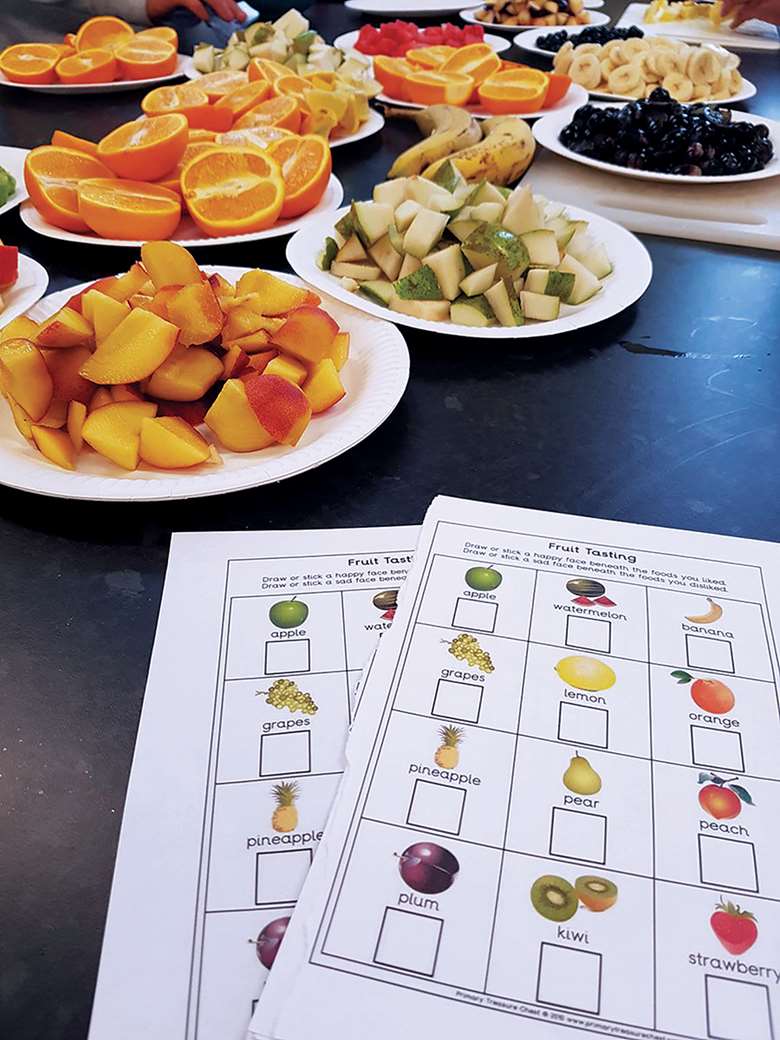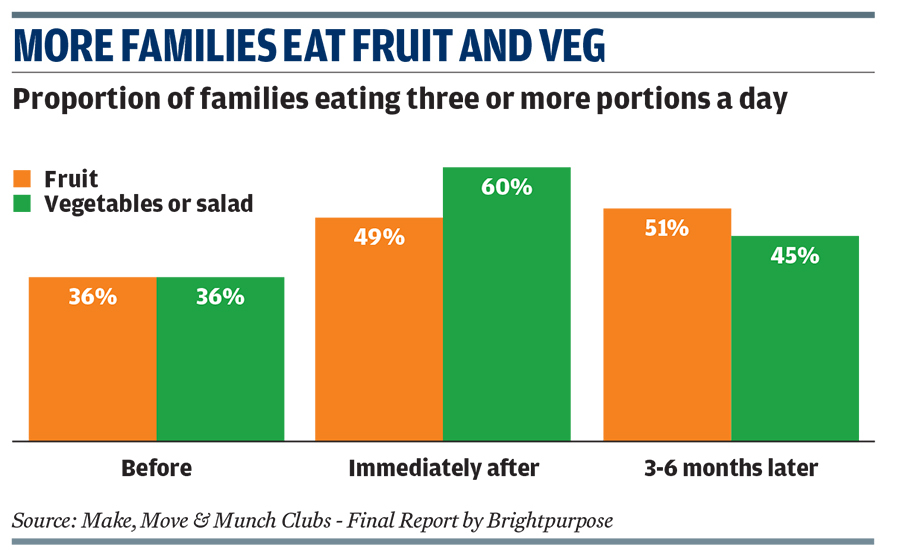How clubs help families make healthy choices
Charlotte Goddard
Tuesday, May 29, 2018
Intensive community programme worked with children and families to teach them about nutrition in a bid to avoid major health risks.

PROJECT
Make, Move & Munch Clubs
PURPOSE
To support women and children living indeprived areas to live healthier lifestyles
FUNDING
The total cost of the programme was just over £1.4m from a three-year fundraising partnership between Tesco, Diabetes UK and the British Heart Foundation. Local projects received up to £220,831
BACKGROUND
Around four million people in the UK have type 2 diabetes and around seven million have heart and circulatory disease. To tackle this challenge, Diabetes UK and the British Heart Foundation formed a three-year partnership with Tesco, which included the delivery of intensive community programme Make, Move & Munch in six high-need areas. The scheme ran from November 2015 to December 2017.
ACTION
The partnership identified six areas where incidence of type 2 diabetes, premature deaths from heart and circulatory disease and obesity levels were high, particularly among women with young families living in areas of deprivation.
The clubs were delivered through local providers, including housing and social care organisation Accord Group in Sandwell. They followed a national template, although some regional variation occurred to meet local need. "It was important to get the message right for particular communities, as opposed to imposing a formula on them," explains Caroline Wolhunter, head of social inclusion at Accord.
Recruitment was through local press, social media and posters, as well as a more targeted approach through schools and community organisations, focusing on families facing particular challenges. Families attended eight 1.5 to 2.5-hour sessions, usually over eight consecutive weeks, although the course could take up to a year to complete. In some clubs children took part in activities alongside adults and in others the sessions were mixed.
Sessions included activities such as cookery demonstrations, and also featured basic physical activity for adults, such as Zumba and yoga. Participants were introduced to small changes they could make for a healthier lifestyle. "For example, measuring oil rather than just pouring it in, or using gram flour to make chapatis, as it has a better GI [glycaemic index]," says Wolhunter. "In Sandwell almost 25 per cent are at risk of diabetes so it is great to be able to make simple swaps like that."
Participants received at least one "Meal-in-a-Bag", containing healthy ingredients provided by Tesco, to encourage trying out new recipes at home, and free items such as measuring spoons, which helped ensure people were reminded of key messages. Adults and children were introduced to new fruit and vegetables, and children got involved in cooking.
Wolhunter says a key aspect in the success of the programme was its social approach. "It's not a medicalised model, we are not asking people to be weighed. It's making small changes to your lifestyle and having fun with the whole family."
The main programme has ended but some providers are incorporating parts of the scheme into other initiatives or delivering further clubs. In Sandwell, the delivery of 14 more clubs is being funded by seven school clusters.

OUTCOME
By the end of the programme 3,235 adults and 4,775 children had attended Make, Move & Munch Clubs. More than half - 58 per cent - of participants completed at least four sessions.
An independent evaluation of the programme carried out by consultancy Brightpurpose surveyed 1,618 participants and found many were eating more fruit and veg after attending the club. A follow-up survey three to six months later found 45 per cent were eating three or more portions of vegetables and salad per day while 51 per cent were eating three or more portions of fruit.
Just under half of respondents always or nearly always looked at nutritional information when buying a new product, compared with 26 per cent at the start. The percentage of attendees that were physically inactive fell from 15 per cent to one per cent.
- If you think your project is worthy of inclusion, email supporting data to derren.hayes@markallengroup.com




